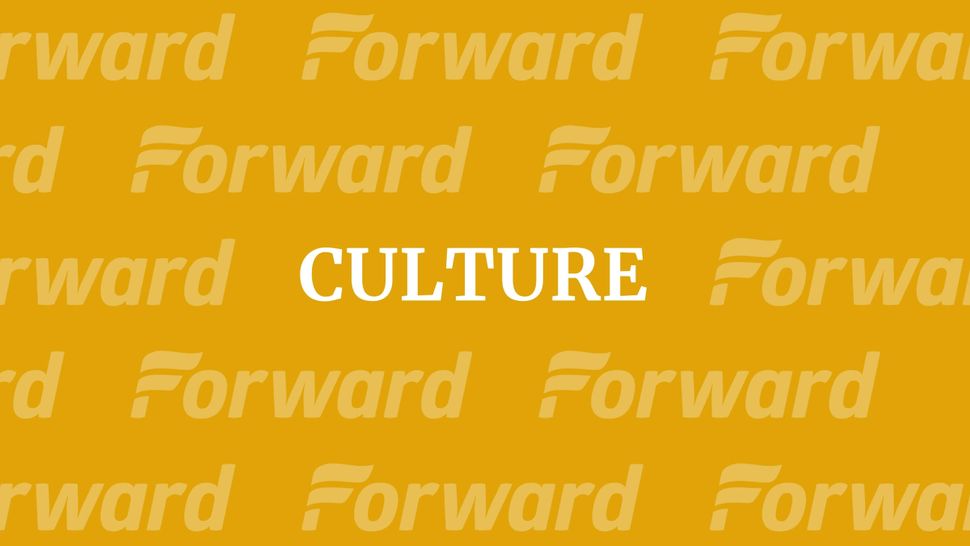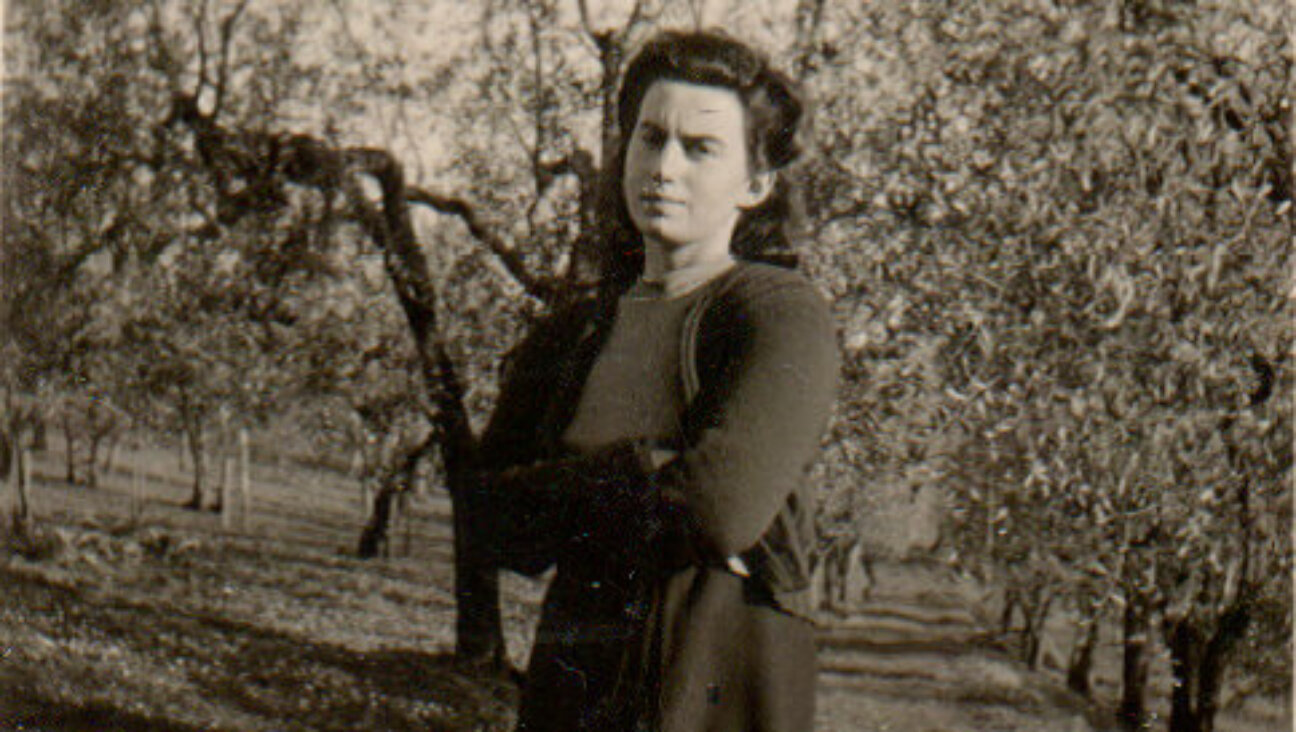Belarusians use Chagall to slam police crackdowns on protesters

“Over the Town” by Marc Chagall, 1918 Image by Wikiart
Marc Chagall loved his flying figures.
Some have speculated that the recurring image of humble folks floating through the sky and over cityscapes is a riff on his own identification as a luftmentsh, or “airman,” a dreamer with big ideas but no concrete plans to realize them.
But to anchor Chagall to this one meaning defies the airy nature of this self-conception. Though he could be playful, he was serious when the occasion called for it. So, it’s in keeping with Chagall’s spirit that citizens of his native Belarus are repurposing one of his paintings of flying people for a political end.
For over a month, mass protests prompted by a disputed August 9 election have rocked Belarus, with many believing that the country’s authoritarian president Alexander Lukashenko rigged the results. The police have been brutal in their attempts to suppress protesters, deploying tear gas, rubber bullets and stun grenades. Last week, dozens of female protesters in Minsk, who were rallying against the election results and police brutality, were thrown into vans by riot police.
Now, on social media, this grim state of affairs is being dramatized using Chagall’s 1918 painting “Over the Town.” In a viral Photoshopped image, a masked Belarusian policeman replaces Chagall’s rendering of himself holding his wife and muse Bella Rosenfeld in their flight over his hometown of Vitebsk. The meaning of the original — a statement on a couple’s lighter-than-air bliss they felt together — has become a symbol of protest.
Social media in #Belarus is flooded with this interpretation of Chagal’s famous painting “Over the town” which now reflects on brutal arrests of peacefully protesting women. pic.twitter.com/GBrceBoLrc
— Belarus Free Theatre (@BFreeTheatre) September 16, 2020
Bella’s arm, reaching out, is transformed from a gesture of benign repose with her lover to one of helpless resistance in the clutches of a black-uniformed officer. Yet the image is not as serious as the protests. It is, in its way, bathetic: a photo-real man inserted into a Cubist style, clashing so clearly as to suggest a Terry Gilliam cut-out animation.
But there’s something more powerful at play here. The choice of painting is a claim to a common national heritage that has weathered dark times in the country’s history, and will survive this period as well.
While Chagall would move to Paris and then New York, Belarus didn’t forget him, even after Stalinist campaigns attempted to do just that. His childhood home is preserved. His paintings are on stamps. The Soviets spurned him, but his face now adorns a mall in Minsk.
As naturally as Italians dress up Michelangelo’s David, Belarussians think nothing of memefying Chagall. To disrupt his timeless art with an ugly modern image is not merely cheeky or profound. The imposition suggests that something fundamental about the country’s culture or national ethic is now being perverted — and has been since Chagall’s paints dried on the piece over 100 years ago.
Something is going against nature — and it isn’t the human act of flying.
PJ Grisar is the Forward’s culture reporter. He can be reached at [email protected].
The Forward is free to read, but it isn’t free to produce

I hope you appreciated this article. Before you go, I’d like to ask you to please support the Forward.
Now more than ever, American Jews need independent news they can trust, with reporting driven by truth, not ideology. We serve you, not any ideological agenda.
At a time when other newsrooms are closing or cutting back, the Forward has removed its paywall and invested additional resources to report on the ground from Israel and around the U.S. on the impact of the war, rising antisemitism and polarized discourse.
This is a great time to support independent Jewish journalism you rely on. Make a gift today!
— Rachel Fishman Feddersen, Publisher and CEO
Support our mission to tell the Jewish story fully and fairly.
Most Popular
- 1

Fast Forward Ye debuts ‘Heil Hitler’ music video that includes a sample of a Hitler speech
- 2

Opinion It looks like Israel totally underestimated Trump
- 3

Culture Is Pope Leo Jewish? Ask his distant cousins — like me
- 4

Fast Forward Student suspended for ‘F— the Jews’ video defends himself on antisemitic podcast
In Case You Missed It
-

News In Edan Alexander’s hometown in New Jersey, months of fear and anguish give way to joy and relief
-

Fast Forward What’s next for suspended student who posted ‘F— the Jews’ video? An alt-right media tour
-

Opinion Despite Netanyahu, Edan Alexander is finally free
-

Opinion A judge just released another pro-Palestinian activist. Here’s why that’s good for the Jews
-
Shop the Forward Store
100% of profits support our journalism
Republish This Story
Please read before republishing
We’re happy to make this story available to republish for free, unless it originated with JTA, Haaretz or another publication (as indicated on the article) and as long as you follow our guidelines.
You must comply with the following:
- Credit the Forward
- Retain our pixel
- Preserve our canonical link in Google search
- Add a noindex tag in Google search
See our full guidelines for more information, and this guide for detail about canonical URLs.
To republish, copy the HTML by clicking on the yellow button to the right; it includes our tracking pixel, all paragraph styles and hyperlinks, the author byline and credit to the Forward. It does not include images; to avoid copyright violations, you must add them manually, following our guidelines. Please email us at [email protected], subject line “republish,” with any questions or to let us know what stories you’re picking up.















